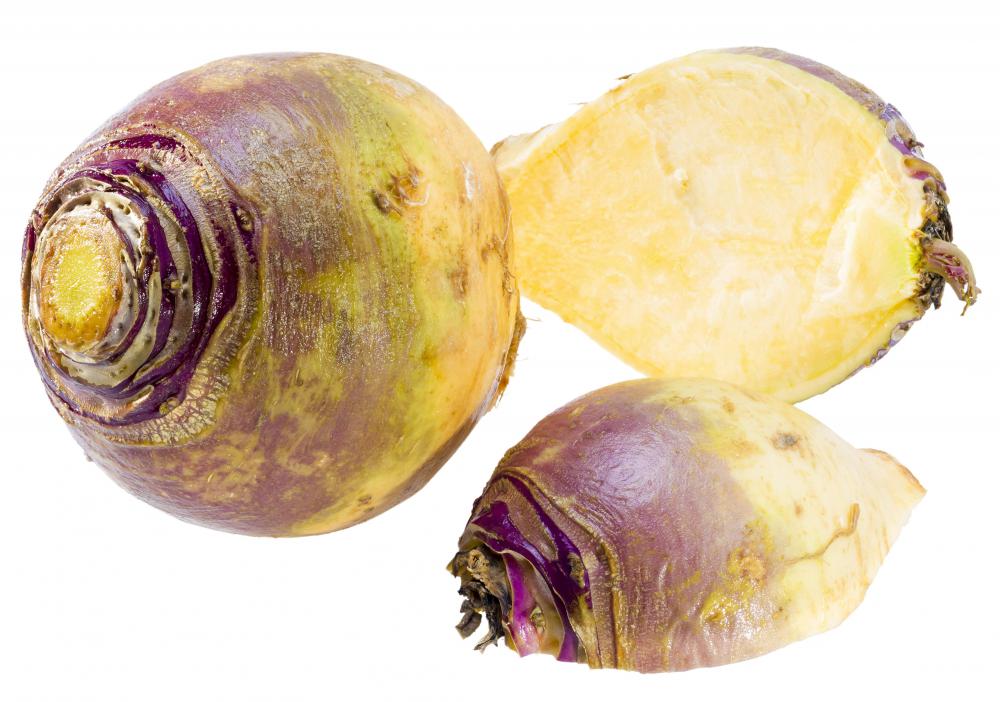At WiseGEEK, we're committed to delivering accurate, trustworthy information. Our expert-authored content is rigorously fact-checked and sourced from credible authorities. Discover how we uphold the highest standards in providing you with reliable knowledge.
How Do I Choose the Best Turnip Seed?
Choose turnip seed varieties based on the known qualities of each cultivar, such as how quickly the plant will mature and the expected taste of the turnip's roots or leaves. Many turnip cultivars are available for consumer purchase. Some varieties, such as the Rubin cultivar, are known to be quick-growing. Other types of turnip seed are prized for the sweet taste of specific parts of the mature turnip. Some gardeners choose to save their own seeds from existing plants rather than purchasing turnip seed.
Both the turnip root and the green leafy top are edible. Specific cultivars are known for tender leaves and minimal roots, such as Shogoin, Seventop, Alltop, and Topper. Purple Top, Snowball, and White Globe turnips are said to produce both roots and leaves of excellent food quality.

Gardeners looking for quality roots can purchase turnip seed of the Oasis or Snowball cultivars. These varieties are said to produce large, sweet roots. Individuals seeking a turnip seed that will mature quickly can buy the Atlantic Speedy or Rubin varieties. These turnip seed cultivars are said to grow to maturity in a brief amount of time, between six and 12 weeks.

Turnip seeds do best in full sun. Plant seeds in soil with a pH of approximately 6.5, and enhance the soil with compost or a high-phosphorus fertilizer. Most types of turnip take two to three months to mature for the roots or leaves to become edible.
Typically, turnip seeds are produced by a plant in its second year of growth. To manually collect the seeds for later use, dig up several whole turnip plants from which greens have not been harvested, waiting until after seed pods have become dry and brown. Allow the plants to dry completely. The turnip seed can be released by pounding the dried pods with a mallet, after which the seeds must be dried and stored.

Known scientifically as Brassica napus or Brassica rapa, turnips are root crops that grow best in cool climates, such as parts of Europe, Canada, the U.K., and the northern United States. This crop has been enjoyed by humans for thousands of years and is also known as excellent forage for livestock. As a member of the mustard plant family, the turnip is botanically related to cauliflower and cabbage. The winter turnip, also known as a rutabaga, has a yellow inner flesh; the so-called summer turnip typically has white flesh. Some gardeners recommend using peas or onions as companion plants for turnips.
AS FEATURED ON:
AS FEATURED ON:













Discussion Comments
I plant a vegetable garden each year, but I have never tried planting turnips. I would like to plant them from seeds, and was wondering if anyone has a suggestion about which type is the most flavorful turnip.
If you purchase turnip seeds at a store, you should always check the expiration date on the packages. Though not all seeds are sensitive to these dates, I have found that seeds for root vegetables like turnips often won't germinate if they are too old.
Post your comments